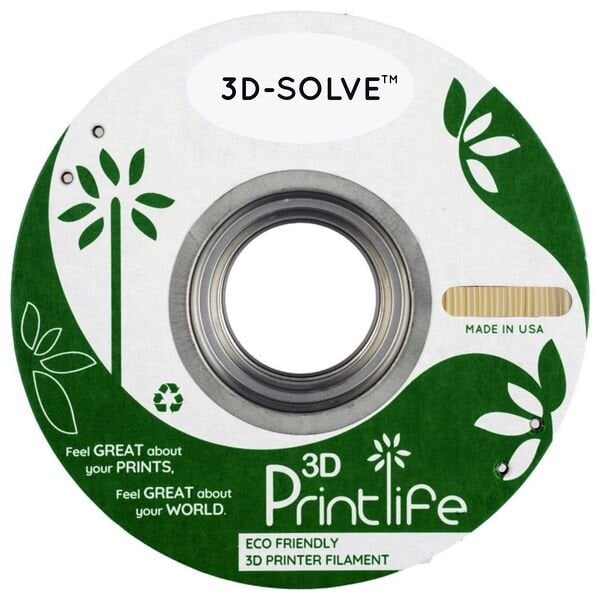![3D-SOLVE, an eco-friendly support material [Source: 3DPrintlife]](https://fabbaloo.com/wp-content/uploads/2020/05/image-asset_img_5eb08c1649963.jpg)
There’s been an incredible interest in soluble support materials, but is there an eco-friendly choice? It turns out there is.
Soluble support material is an incredible benefit to 3D printer operators as it enables the ability to easily 3D print literally any complex geometry without concern for support removal.
The original support materials used had to be ripped off the actual model, as they were literally just more model material with spindly attachment points. This left a kind of stubbly under-surface on many 3D prints and took an extraordinary long time to remove in many cases. That’s still the case even with dedicated support materials that don’t stick to the model.
There are some geometric scenarios in which traditional support material cannot be removed because it’s trapped inside a tiny crevice. This situation has to be one of the most frustrating one can encounter when 3D printing.
Enter soluble support materials: these are 3D printed in much the same way as traditional support materials using a dual extrusion configuration, but often with a more flush surface to the model. Once completed, the support material is simply dissolved in a solvent with little labor required from the operator. Better results with less work, you cannot beat that.
But there are problems.
One is that the solvent used can be quite different depending on which soluble support material is used. For example, if you’re using Stratasys’ SR-30 soluble support material, you’ll also need to use their alkaline solution as a solvent, usually in a dedicated wash tank.
Some other soluble support materials need only plain water to dissolve, and the rate of dissolve depends on the particular materials involved.
Another issue that the waste solution created by the washing sequence must eventually be disposed of. Depending on the solvent used, this may not be easily done. I am aware of some workshops that must collect this waste solution in drums and then have to send it out for specialized disposal handling. That can be expensive, depending on the level of workshop activity.
One company that’s taking on this challenge is 3DPrintlife, who have a very eco-friendly strategy. They say:
“We manufacture only premium quality eco-friendly materials, all made in the USA at our medical grade extrusion facility.”
One of their products is 3D-SOLVE, a water-soluble support material. This material has several really intriguing aspects:
-
It can dissolve almost completely (99%) in only 20 minutes
-
The resulting liquid solution is entirely safe to put down any drain
-
The material is non-toxic
-
It is “100%” biodegradable, and even its spool is recyclable, and is even certified as such.
Sounds good, but there are a couple of challenges. First, this material is apparently “incompatible” with PLA. I had thought this might have something to do with the softening temperature, but 3D-SOLVE can be 3D printed at 205C, about the same as PLA. They don’t say, but I’d guess that the formulation tends to stick to PLA – but not to ABS, PETG, or other common 3D print materials.
The material is a bit pricey, at US$80 per 500g, or US$160/kg, which could be a challenge for some. However, more advanced 3D print slicing software often do give an option to use expensive support materials only at the interface layer between support and model, so there’s that.
The other challenge that I could see is storage. 3DPrintlife doesn’t say, but it’s probable the material is quite hygroscopic — it does dissolve in water quickly, after all. Thus it probably requires stringent storage procedures including sealed bags and possibly even the dry chamber treatment.
If you’re 3D printing highly complex objects and looking for an eco-safe soluble support material solution, you might consider looking at 3DPrintlife’s option.
Via 3D Printlife

